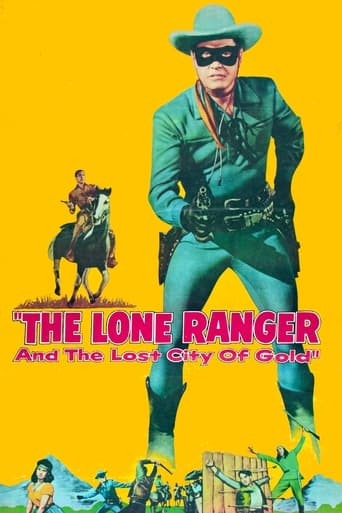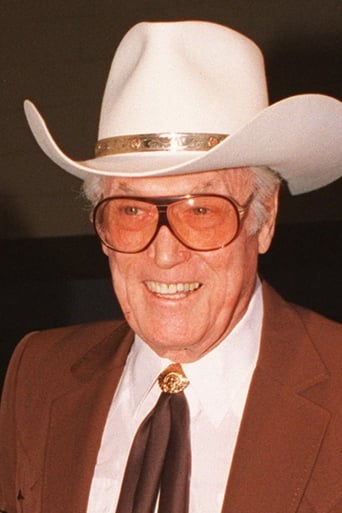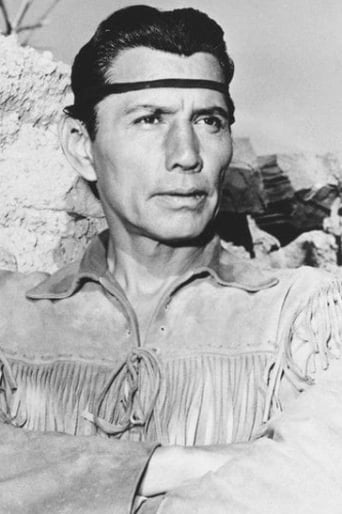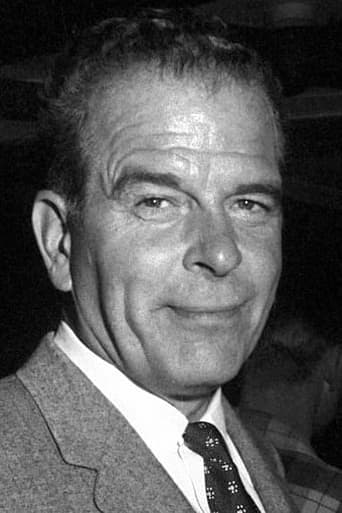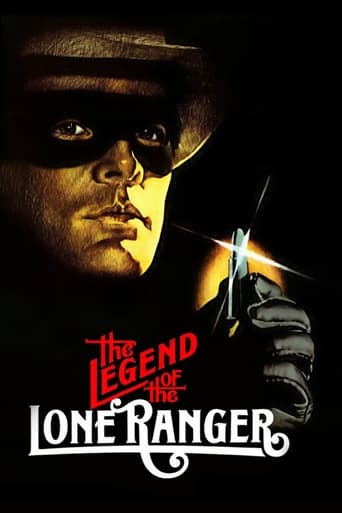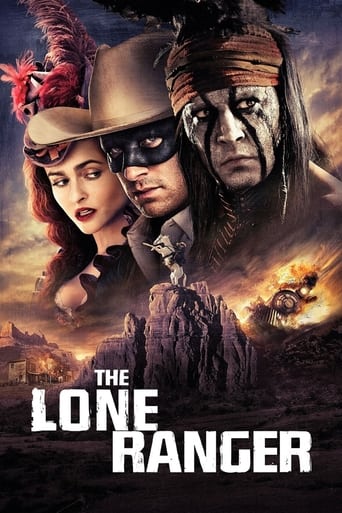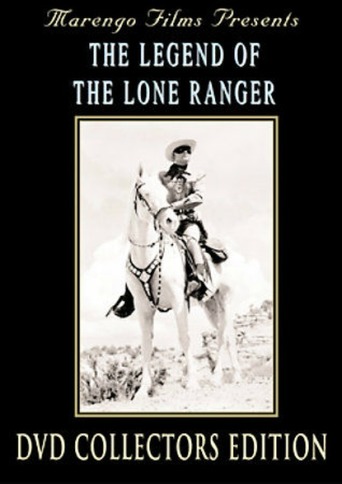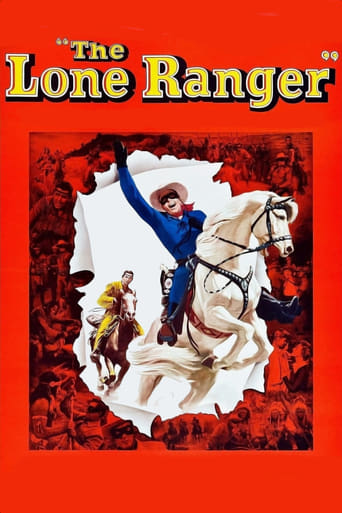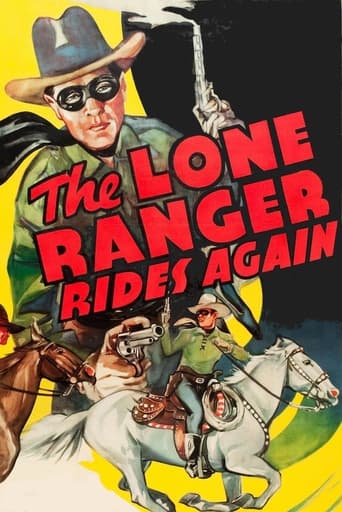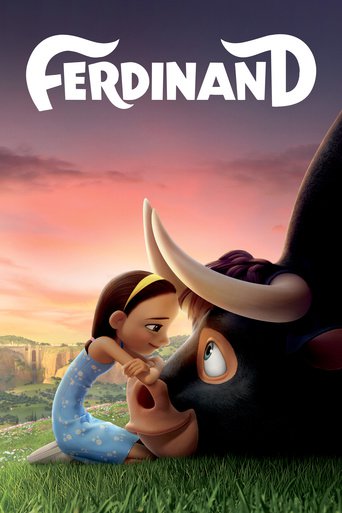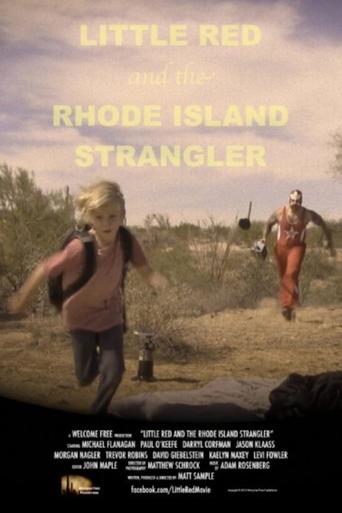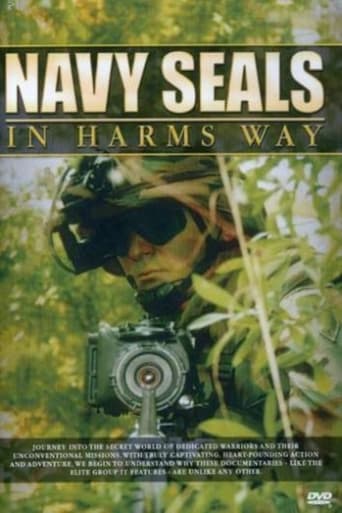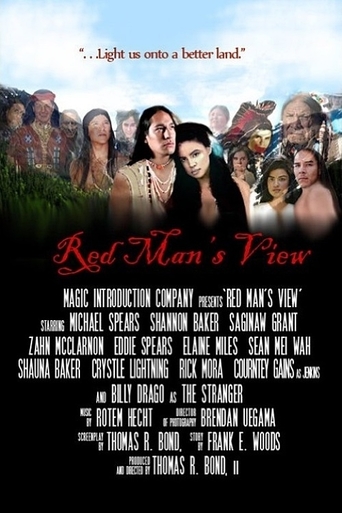The Lone Ranger and the Lost City of Gold (1958)
Three Indians were brutally murdered by a gang of hooded outlaws. Each one possessed a silver medallion, which were sections cut off from a large silver plaque which served as a treasure map to a secret location where a large amount of gold is reputedly stashed. Two more medallions are unaccounted for, and the The Lone Ranger and his friend Tonto must use all their resources to intercept the gang, prevent further carnage and save the owners of the medallions.
Watch Trailer
Free Trial Channels
Cast


Similar titles
Reviews
Good start, but then it gets ruined
brilliant actors, brilliant editing
I wanted to like it more than I actually did... But much of the humor totally escaped me and I walked out only mildly impressed.
If you're interested in the topic at hand, you should just watch it and judge yourself because the reviews have gone very biased by people that didn't even watch it and just hate (or love) the creator. I liked it, it was well written, narrated, and directed and it was about a topic that interests me.
The Lone Ranger was one of my childhood heroes, and I never missed a chance to catch his adventures on Saturday morning re-runs during the mid 1950's. Somehow however, this film got by me until I had a chance to catch it today courtesy of my local library. I was struck by a number of elements during the story, as right from the start, you have a new Lone Ranger theme song before you hear the traditional opening used on the TV show. The adventure uses Tonto (Jay Silverheels) in a nicely expanded role, even though he takes his share of lumps throughout, getting beat up and shot more than once. Perhaps most interesting of all, the Ranger actually shoots to kill in a couple of situations, putting his character at odds with the vision created for the TV series that he would never use his weapon to kill, only to wound or to protect himself and others. Aside from that, you have a fairly traditional Western adventure. The Ranger and Tonto come to the aid of an Indian tribe whose members are being murdered by hooded raiders attempting to track down five medallions that together, form the key to a fabulous treasure. Interestingly, the leader of the bad guys is an already wealthy woman, disarmingly portrayed by Noreen Nash. Her top henchman is played by Douglas Kennedy, and it was no surprise to see Lane Bradford as one of the baddies. Bradford's character was one of the men shot by the Lone Ranger, which got me to thinking how many times that might have happened in the TV series. A quick check revealed that he appeared in 'The Lone Ranger' show fifteen times, while Kennedy appeared a total of six times. What might be most interesting of all about the picture is it's attempt to portray Indians in a revisionist light at a time when TV and movie Westerns were still largely portraying the red man as an illiterate savage. The character of Dr. James Rolfe (Norman Fredric) is the most revealing in that regard; he's an Indian who attained an education and went on to become a doctor, returning to the land of his tribe to tend to the needs of all it's citizens. For purposes of the story, he had to impersonate a white man to be accepted by the local ranchers. This was the hardest thing for me to accept about the story line actually, as Dr. Rolfe was the grandson of the elderly Chief Tomache (John Miljan). That no one in the story except Paviva (Lisa Montell) knew that he was really an Indian was something of a stretch for me. I suppose it was possible that he left the tribe at an early age, but without that back story fleshed out, it didn't make sense to me that no one else from the tribe would know who he was.I don't know why I'm intrigued by this so much, but after watching and reviewing over two hundred Westerns on this site, I've suddenly come across three films in the past month that utilize a blanket pull gimmick like the one performed by Tonto's horse Scout in this picture. Roy Rogers' Trigger did a similar stunt in 1952's "Son of Paleface", and I caught it again in 1958's "The Big Country" by a horse named Old Thunder in that flick. It's done as a bit of comic relief in a situation that wouldn't normally come up for a horse, and it now makes me curious when the bit might have been first done. I'll have to keep watching more old time Westerns. Not to be outdone, Silver had a chance to shine in the picture as well, making the save of an Indian baby that was about to be used as a hostage by bad guy Brady.Speaking of gimmicks, Clayton Moore borrowed a tactic from the TV series when he donned a disguise as a Southern gentleman to smoke out the villains posing as the hooded raiders. Whenever he would do so in the half hour format, it was always clever enough to hide his real features, usually with a beard as done here. One of the more interesting episodes I recall had to do with the Ranger impersonating an actor in the guise of Abraham Lincoln.Keep an eye out for a couple of goofs I spotted along the way. In an early scene at the opening, an Indian is shot by one of the hooded raiders, and in a close up, there's blood on his shirt but no bullet hole. Later on in the story, Ross Brady and Wilson ride up on the Indians after they've kidnapped one of the villains out of jail. Brady shoots him from a standing position to prevent him from identifying the raiders, but is immediately shown about to make his getaway on horseback with Wilson.
The Lone Ranger & Tonto set out to bring to justice a band of hooded raiders who have killed three Indians for what appears at first to be no apparent reason..that is until the Lone Ranger discovers from a conversation with the Indian Chief Tomache that each man possessed a medallion. The five medallions given by Tomache to his friends as gifts we later learn when combined will provide the mastermind behind the hooded raiders with a map to a legendary lost city of gold. Can the Lone Ranger protect the remaining two individuals in possession of the medallions before the hooded raiders get their hands on it? Is there really a lost city of gold somewhere upon native land? Watching this, I kept knowing what was going to happen beforehand and everything seemed really familiar until eventually I realized I had seen this exact same movie when I was but a little kid..suddenly the memories flooded back and I remembered having quite a fun time as a child enjoying this one with a bunch of my friends. As an adult though, the plot is somewhat predictable but you know this, while not quite in the same league as the 1956 film, remains a lot of fun to watch. Clayton Moore is perfect as the Lone Ranger and Jay Silverwheels as Tonto steals a lot of this movie as he's probably in more action scenes than even the Lone Ranger. There's some very familiar faces on hand here including Douglas Kennedy as Ross Brady, headman of the Hooded Raiders gang, Charles Watts as a bigoted Sheriff, and Ralph Moody as a kindly Padre.
"The Lone Ranger and the Lost City of Gold" was the second of two features made in the 50s starring Clayton Moore as The Lone Ranger and Jay Silverheels as Tonto. Based on the long running TV series, this film was also produced in color by Jack Wrather. As in the previous entry, there is an excellent cast of veteran western performers. The "lost city" of the title is an old Spanish city of gold hidden away on Indian tribal lands. There is a five piece amulet that when assembled, will show the location of the treasure. The holders of the various pieces begin to turn up murdered by a gang of hooded riders and its up to our heroes to save the day. The baddies are led by Fran Henderson (Noreen Nash) whose chief henchman Ross Brady (Douglas Kennedy) does all of the dirty work. Finally, there is only one missing piece. The Lone Ranger disguises himself as a southern gentleman bounty hunter in order to gain Henderson's confidence. The old Chief (John Miljan) laments for his missing grandson who turns out to be the town doctor (Norman Frederic). Finally, The Lone Ranger and Tonto sort things out and deal with the villains. In addition to those mentioned, Lisa Monteil appears as an Indian maiden, Ralph Moody as the Padre, Charles Watts as the corrupt sheriff and Lane Bradford and Bill Henry as Kennedy's henchmen. Clayton Moore had been around since the late 30s, appearing in many "B" westerns and starring in several serials. By the time this film was made, he had become so identified with the Lone Ranger, that he never made another feature film. Jay Silverheels similarly came up through the "B" movie ranks and appeared in several Universal westerns in the 50s and the Glenn Ford western "Santee" as late as 1973.
Although beautifully shot, this United Artists feature is not quite as good as the first Lone Ranger big screen color outing of 1956 by Warner Brothers. But neither is it average, for the cinematic effort does go boldly where most westerns of the time dared not. Remarkably, this 1958 film takes on racial bigotry in a manner that was quite daring for a family western of this period. In point of fact, the writers of this feature should be applauded for going a step farther and making racial "passing" an integral part of an otherwise ordinary plot. How many dramatically significant family films of the time can one name that would dare to have dealt with such an emotionally explosive premise?It should also be noted, Jay Silverheels for the first time, has a much greater speaking role and acting function than normally allowed for his character, Tonto. All in all, with solid acting from most of it's participants, this is not a bad western. On the whole, the film is thoroughly enjoyable, on several levels, for all members of the family.

